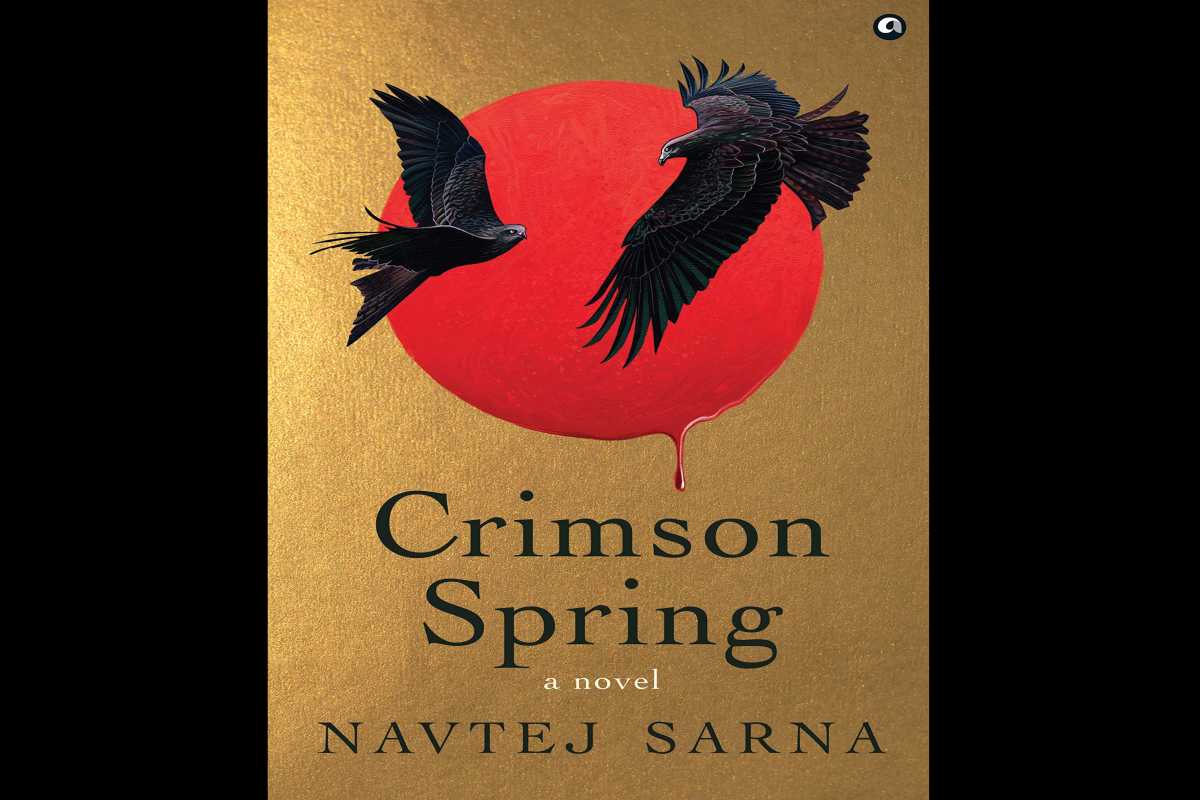A chronicle of deportation and incarceration
The reviewer is an associate professor of English, Tarakeswar Degree College, University of Burdwan.
The events at Jallianwala Bagh in Amritsar more than a century ago are a part of the collective memory of Indi- ans and while history has documented what happened that fateful Baisakhi day in considerable detail, Sarna’s pen – and his imagination – take us into the lives of characters who must have existed if only because he has etched them so dexterously.

Crimson Spring
There comes a stage in a writer’s career when almost everyone agrees he has come close to the peak of his craft. Navtej Sarna has been writing for more than four decades; his first newspaper clippings dating back to the 1970s; his first book adorned bookshelves more than three decades ago; his first work of fiction, published more than 20 years ago, was critically acclaimed, and in the years since he has provided an eclectic mix of titles to the bookseller.
But with Crimson Spring, Sarna has produced his best book, one that elevates him from the ranks of good Indian writers to the far shorter list of those who have touched greatness. This is a wonderfully well-written book, made even better by the fact that having chosen a backdrop familiar to most Indians to weave his story, Sarna injected it with freshness.
The events at Jallianwala Bagh in Amritsar more than a century ago are a part of the collective memory of Indi- ans and while history has documented what happened that fateful Baisakhi day in considerable detail, Sarna’s pen – and his imagination – take us into the lives of characters who must have existed if only because he has etched them so dexterously.
Advertisement
These are nine characters who come together in the first chapter – in itself, an unusual way to start a book but one that Sarna manages to pull off – to set a beautifully choreographed stage. Only one of them is a real per- son, the mercurial Udham Singh who was to be hanged some two decades after the massacre for slaying Sir Michael O’Dwyer, the Lieutenant-Governor of Punjab in 1919. If anything, it is Udham’s character that has a few blurred edges; the others are masterfully chiselled by the author.
Sarna notes in the prologue: “Even a hundred years later, the facts speak for themselves. The before and after are only history. Its recording and inter-predation will differ from soldier to civilian, from brown to white, from ruler to ruled, from historian to novelist. For every event in history is at heart made up of the acts of human beings and its telling is inevitably coloured with the differing shades of pride, regret, ambition, love, pain, courage, and longing human beings carry within themselves.”
Having set down that disclaimer, as it were, Sarna proceeds to bring his characters together in a narrative that rings mesmerizingly true even though it wears the robes of fiction.
The characters include a woman desperately wanting a child; a convert to Sikhism; his brother-in-law and nephew; a lawyer who over the course of those tumultuous days loses his faith in English notions of fair play; a revolutionary; the ADC to Colonel Reginald Dyer; the Chief Secretary of Punjab, and of course Udham Singh.
These characters, variously, tell the story of Punjab’s crimson spring, from the events that began with the deportation of Dr Saifuddin Kitchlew and Dr Satyapal, organisers of the protests to the infamous Rowlatt Act, to the hartals in Amritsar, then to the shootings on Amritsar’s railway bridges on 10 April, to the horrors of 13 April and of the days that followed. But woven within this narrative are strands that expose the reader to the revolutionaries of the Ghadar party, the machinations of temporal authorities installed by the British, the emergence of the Singh Sabha, the role of Indian soldiers in World War I, and the life of Udham Singh as he plotted the assassination of one of the two men (the other had already died) he held responsible for the massacre.
The story flows easily, even though it jumps back and forth in time to explain where each character has come from. The descriptions of places and seasons are vivid enough for the colours to seep through while the lacings of sepia ensure that historical context never eludes the reader.
This is a work to be treasured, bought rather than borrowed for it asks to be read more than once.
The reviewer is Editor, The Statesman.
Advertisement